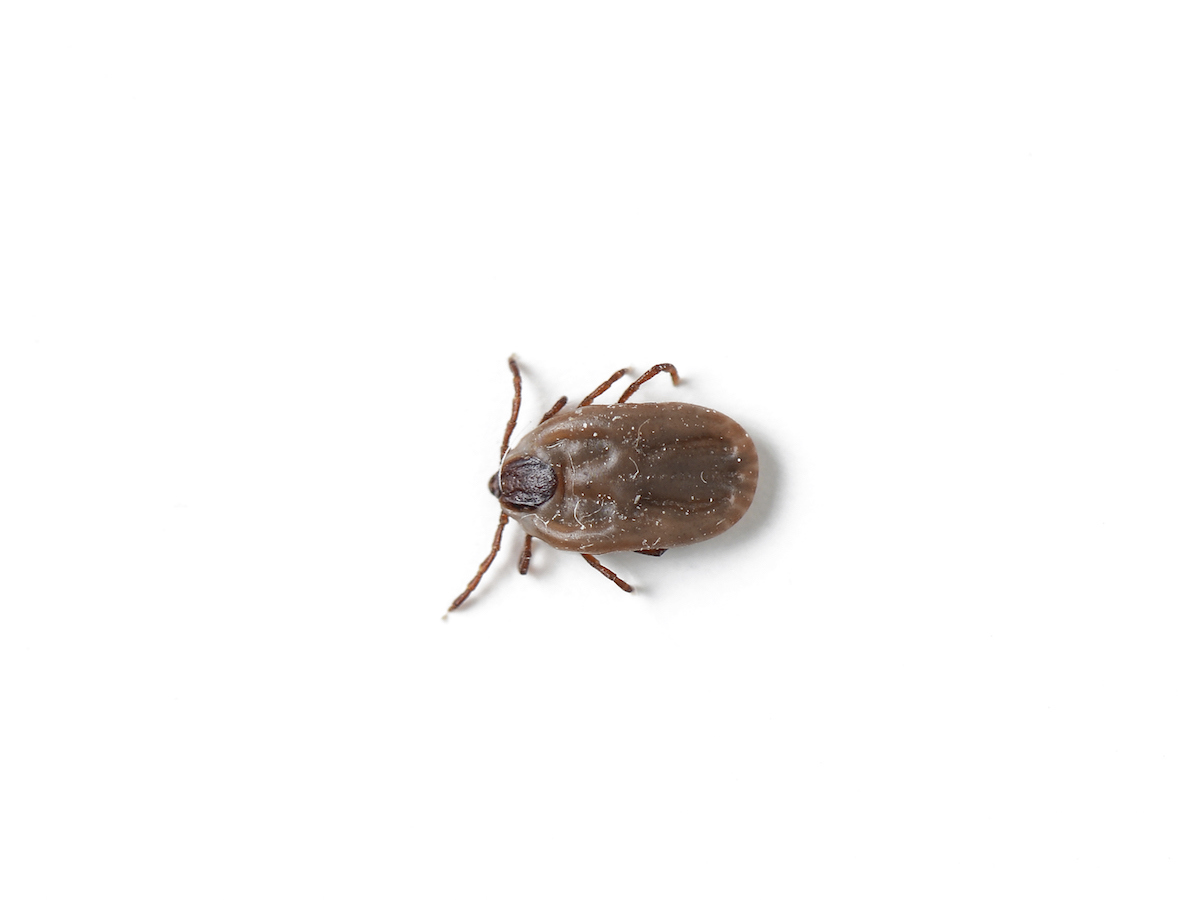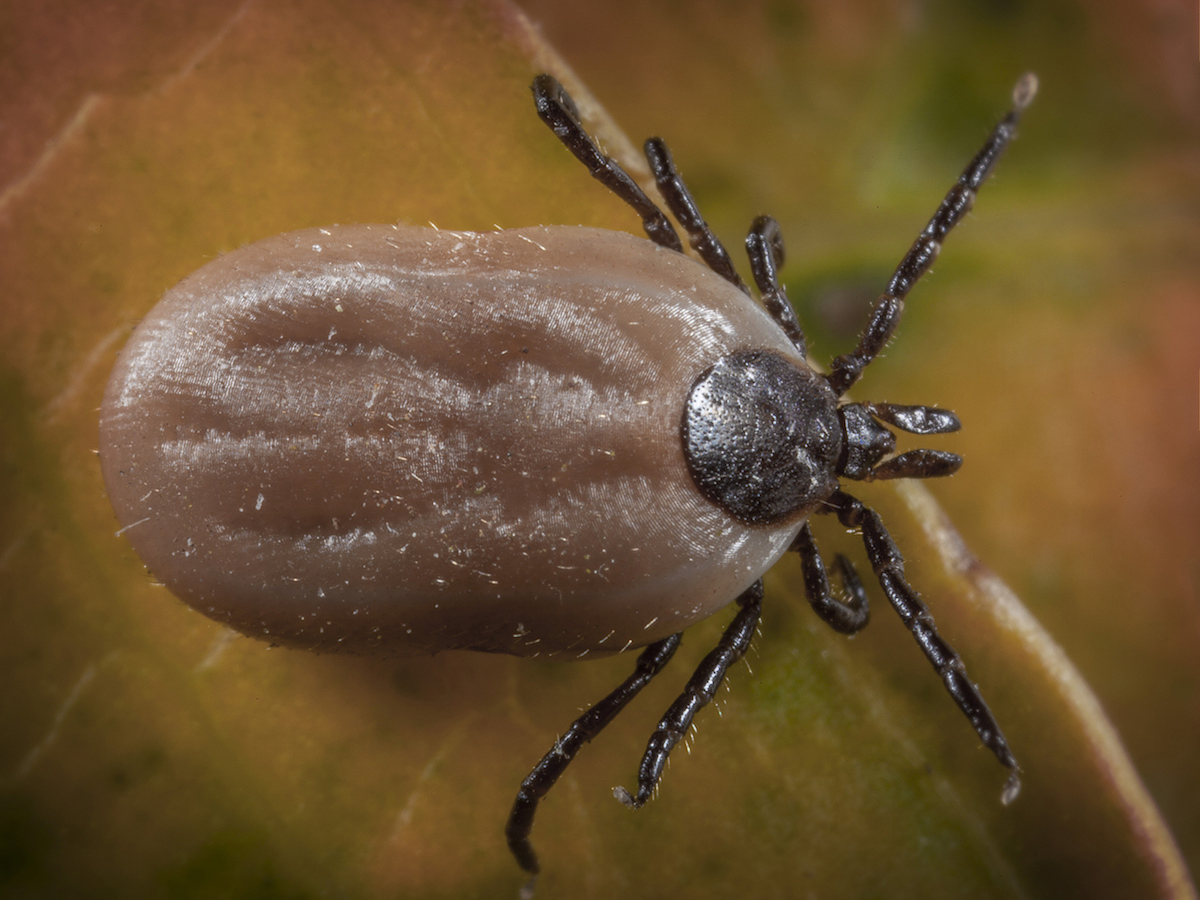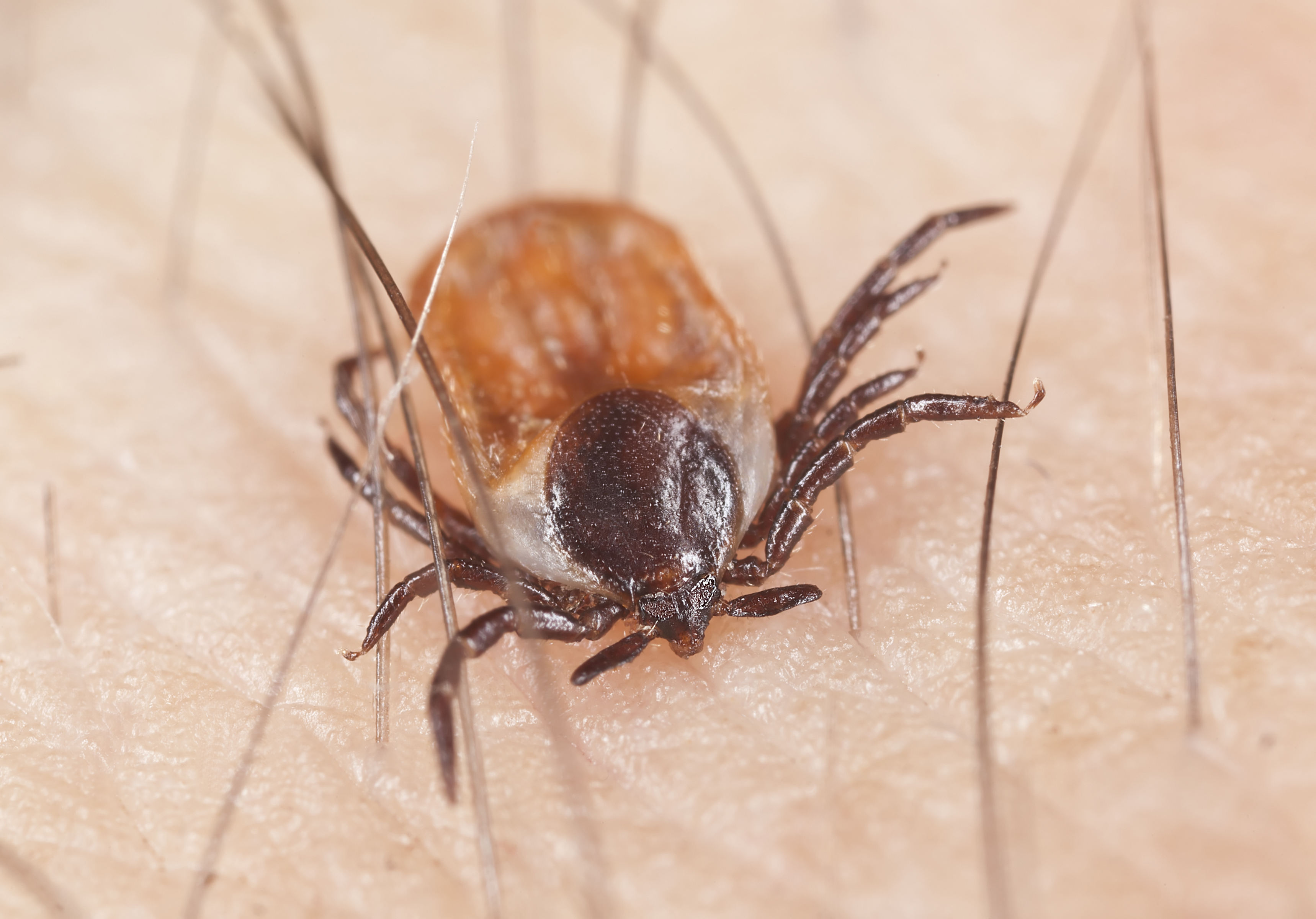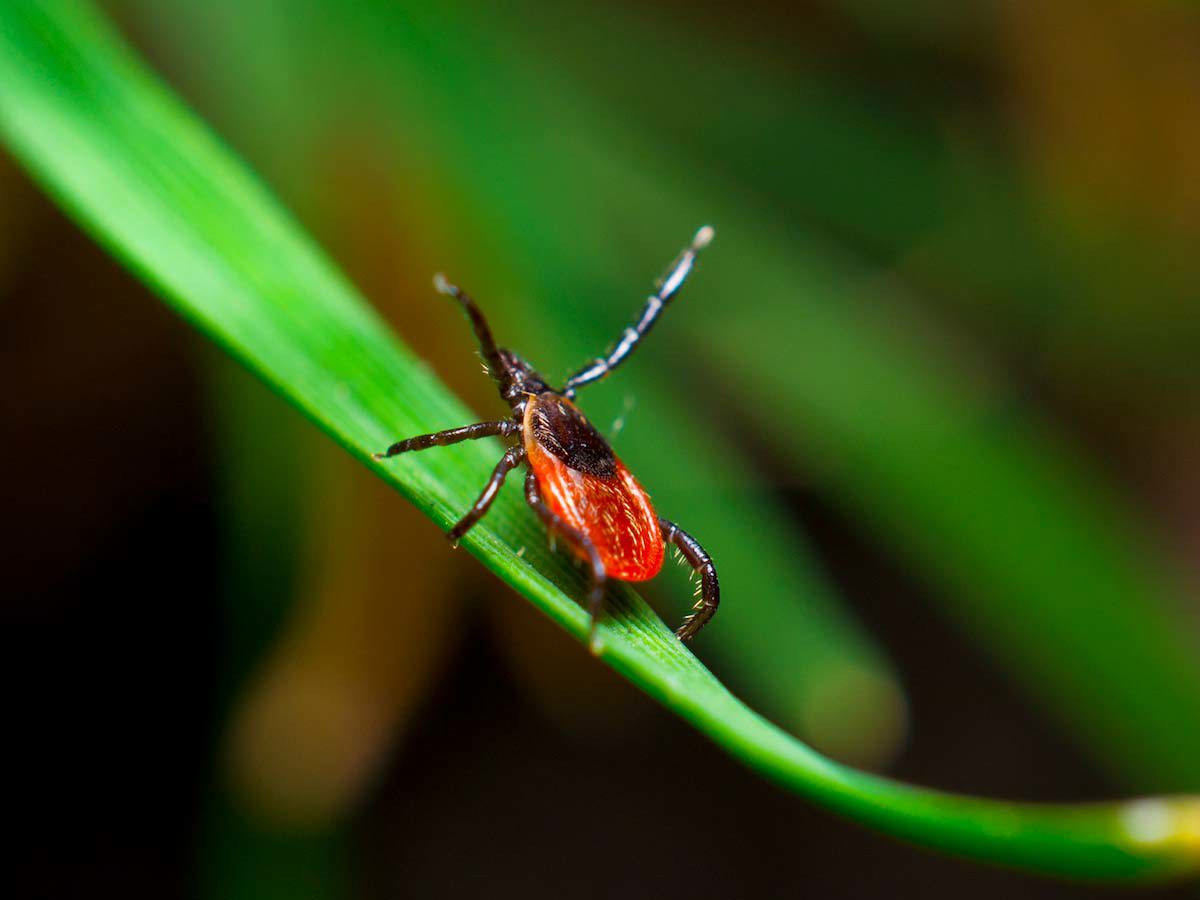Brown Dog Ticks Rhipicephalus sanguineus

Brown Dog Tick Identification
Color: Reddish brown, gray-blue when engorged
Size: 1/8” (3 mm) unengorged; 1/2” (12 mm) engorged
Legs: Larvae have 6 legs, nymphs and adults have 8 legs
Antennae: No
Shape: Oval, flattened
Region: Found throughout the U.S.
What are brown dog ticks?
The Brown Dog tick gets its common name from its overall reddish brown color, and because it is commonly found on domestic dogs. Although this species is most commonly encountered indoors and in kennels, it typically does not bite humans. However, it will do so in the absence of a canine host on rare occasions. If found on a dog or other animal, the brown dog tick should be removed as soon as possible. This tick is found throughout the United States and the world, typically in warmer climates. Keep reading if you want to learn more about brown dog ticks, including treatment and removal of ticks.

What do brown dog ticks look like?
Unengorged, adult brown dog ticks are about 1/8" long, but enlarge up to about 1/2" long when engorged with blood. Both male and female dog ticks have flat, reddish brown, oval bodies, but when engorged may become gray-blue or olive color. Male dog ticks have tiny pits scattered over the back. Their scutum (shield) is present, and covers their entire back, while female scutum only covers the front part of a female’s back. In both male and female dog ticks, the eyes are on margin of the scutum, with mouthparts visible from above.
On dogs, adult brown dog ticks can typically be found on the ears and between the toes, while younger or immature ones attach along the dog’s back. Knowing proper dog tick removal is essential. When not feeding on a host, brown dog ticks can be found both outside and inside, although they generally prefer the warm, dry conditions inside homes. Brown dog ticks are unusual among ticks in that they can complete their entire life cycle indoors, allowing them to establish populations in colder climates. Outdoors, they’re known to scale up shrubs, grass and other vegetation, attaching themselves to passing hosts such as dogs, deer, rabbits and even humans.
Brown dog ticks are notorious for infesting homes once brought inside, typically via pets such as dogs. Once inside, female ticks will drop off of their host and lay eggs in any crack or crevice they can find, potentially causing an explosion of hundreds of immature ticks after a few weeks. They typically move upward to higher ground, so eggs are often deposited in openings near wall hangings, ceiling, or roofs, promoting host encounters. They can also be found in cracks around baseboards, window frames and door frames. These dark brown eggs are usually laid in masses of 1,000-3,000. Once they hatch, the larval ticks will usually feed on pets like dogs or cats, but can also be found on humans.
Both adult and larval brown dog ticks are capable of surviving without feeding for up to eight months. Aside from catching a ride inside on a household pet, possums, raccoons and other wildlife can carry these ticks into a yard, after which they can take shelter in doghouses and beneath decks.
To remove a brown dog tick, use fine-tipped tweezers to grasp it as close to the skin's surface as possible. Pull upward with steady, even pressure. Don't twist or jerk the tick as this can cause the mouth parts to break off and remain in the skin. Once the tick is removed, thoroughly clean the bite site with soap and water. Do not touch the tick but save it in rubbing alcohol for later identification. To dispose of it, flush the tick down the toilet or wrap it in a tissue before disposing in a closed receptacle. After the dog tick removal, consult with a doctor or veterinarian immediately if there is a reaction at the bite site or if you believe you have contracted a disease. To address ticks on your property, contact a licensed pest control professional to conduct an inspection and develop an effective treatment plan.
Although dogs are the preferred host, brown dog ticks will feed on other mammals (including domestic animals and humans) if dogs are not available. They rarely feed on humans, but brown dog ticks can serve as vectors of Rocky Mountain spotted fever (RMSF), which is caused by the rickettsial bacterium Rickettsia rickettsii, and Boutonneuse fever which is caused by the rickettsial bacterium Rickettsia conorii. Additionally, they can transmit several tick-borne diseases to dogs, including canine ehrlichiosis and canine Babesia, which can cause symptoms including fever, bleeding disorders and systemic shock.
The most common sign of a brown dog tick problem is spotting one in your yard, on your body, or on your pet.
The best way to prevent brown dog ticks is awareness of dog surroundings and dog prevention medications. Keeping pet areas clean and free of debris can help locate engorged ticks looking to lay eggs and remove them from the house. Brown dog tick treatment for pets is also an important prevention tool. Pets should be treated with flea and tick repellent as necessary.
If an infestation is discovered, the occupant or owner of the infested home or kennel must thoroughly clean the area and remove all debris to eliminate as many ticks as possible. Pet bedding and resting areas should receive careful attention. The dog or pet must be treated, preferably by a veterinarian or grooming parlor, on the same day of treatment, either before or while the premises are being treated. For indoor and outdoor treatment of the infested property, contact a tick control professional immediately.
If you suspect a brown dog tick issue for your home, the best course of action is to contact a licensed pest control professional. They will conduct a thorough inspection to identify the full extent of the problem. Once the situation is properly identified, the appropriate control measures can be taken.
You can find a certified pest professional near you with the helpful zip code search below.



